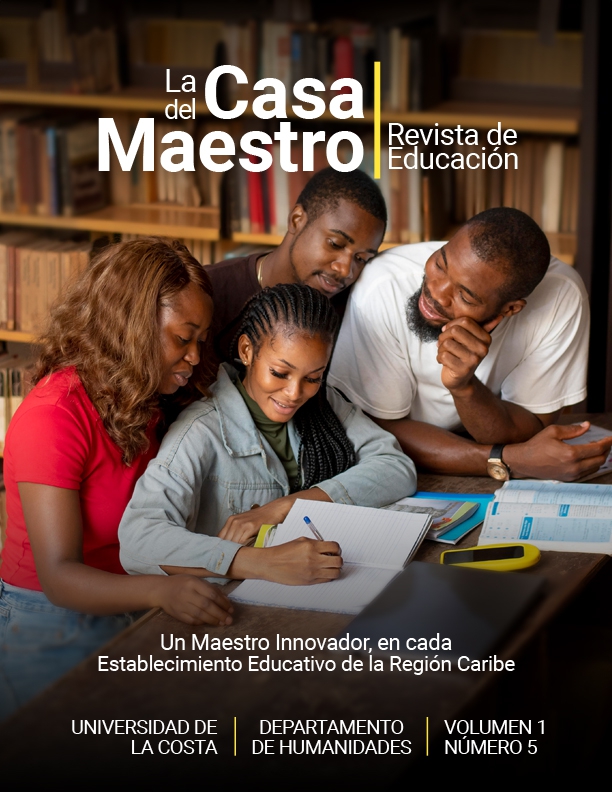Environmental Education Guidelines for the use and disposal of drinking water in the Serranilla neighborhood
Keywords:
aguas subterráneas, calidad del agua, nivel de vida, saneamiento básicoAbstract
San Andrés Island is one of the Colombian departments that registers one of the most critical situations in terms of the provision of basic sanitation services, this is defined as the minimum actions that must be adopted in an urban or rural location, so that people They can live in a healthy environment, which includes: (Water supply for human consumption, Management and proper final disposal of wastewater and excreta, and proper final disposal of municipal solid waste. According to DANE data, public service coverage home aqueduct is only 30.7% and 17.8% in sewerage (DANE, 2020), given these conditions people must opt for other means to supply themselves with drinking water where most homes do not have accounts the minimum technical requirements (Coralina, 2009) Therefore, the objective of this project Formulate operational guidelines for the disposal and storage of drinking water in order to enable the improvement of the quality of life of the inhabitants of the Serranilla de la Isla neighborhood of San Andres. The methodology consisted of documentary analysis, review of researchers' trajectories, as well as 2 instruments for data collection that were surveys and interviews that were applied to the sampled population.
Downloads
References
Adimalla, N. (2020). ater quality and public health. Environmental Geochemistry and Health,.
Chowdhury, R. M. (2019). ssessment of groundwater quality in relation to human health risks in Mymensingh district, Bangladesh. Environmental Geochemistry and Health.
Cirelli, A. F. (2005). Obtenido de https://www.psa.es/es/projects/solarsafewater/documents/libro/01_Capitulo_01.pdf
Coralina. (2009). CatalinaPLAN DE MANEJO DE AGUAS SUBTERRANEAS. Obtenido de https://www.google.com/url?sa=t&rct=j&q=&esrc=s&source=web&cd=&cad=rja&uact=8&ved=2ahUKEwjy3eXn5_z6AhXKQzABHTIHATkQFnoECBQQAQ&url=https%3A%2F%2Farchivo.minambiente.gov.co%2Fimages%2FGestionIntegraldelRecursoHidrico%2Fpdf%2Facuiferos%2FPlan-de-Manejo-de-Ag
Córdoba, M. A. (2010). Obtenido de https://www.redalyc.org/pdf/863/86315692002.pdf
DANE. (2020). DANE. Obtenido de chrome-extension://efaidnbmnnnibpcajpcglclefindmkaj/https://www.dane.gov.co/files/investigaciones/planes-desarrollo-territorial/070220-Info-Gobernacion-San-Andres.pdf
Daza, C. L. (2019). Calidad del agua subterránea en Colombia: una revisión. Boletín de Investigaciones Geográficas.
Defensoria del pueblo. (2016). Obtenido de https://www.defensoria.gov.co/-/cobertura-de-agua-en-san-andr%C3%A9s-es-menor-del-50-por-ciento-defensor%C3%ADa
FAO. (2020). Water for agriculture. Obtenido de http://www.fao.org/water/agriculture/es/
Findeter. (2021). ESTUDIO DEL SECTOR AGUA POTABLE Y SANEAMIENTO BÁSICO COLOMBIANO. Obtenido de chrome-extension://efaidnbmnnnibpcajpcglclefindmkaj/https://repositorio.findeter.gov.co/bitstream/handle/123456789/9703/%284%29%20ESTUDIO%20SECTORIAL%20apysb%20.pdf?sequence=13&isAllowed=y
Franco, A. Á. (2019). Evaluación de la exposición al mercurio en comunidades mineras de Colombia. Revista Internacional de Contaminación Ambiental.
García-Rodríguez, D. M.-C.-P.-G. (2021). Contaminación de aguas subterráneas por actividad industrial en la región del Valle de Aburrá, Colombia. Revista de Ingeniería y Tecnología.
García-Rodríguez, D. M.-C.-P.-G. (2021). Evaluación de la calidad del agua subterránea para consumo humano en la región de Santander, Colombia. Revista de Investigación Académica.
Hernández, R. F. (2014). Metodología de la investigación (6ª ed.). México, D.F.: McGraw-Hill.
Jouravlev, A. S. (2021). Reflexiones sobre la gestión del agua en América Latina y el Caribe. Obtenido de https://repositorio.cepal.org/handle/11362/46792
Khan, S. e. (2018). Drinking water quality and human health: An editorial. Environmental Science and Pollution Research.
Ki-moon, B. (2007). Mensaje del secretario general de la oNu con motivo del Día Mundial del agua. Obtenido de http://www.un.org/es/sg/messages/2007/
LA REPUBLICA. (29 de 04 de 2021). En América Latina y el Caribe, 26% de la población no tiene acceso a agua. ESPAÑA.
López-García, D. G.-B.-S.-B. (2021). Evaluación de la calidad del agua subterránea para consumo humano en la región de Santander, Colombia. Revista de Investigación Académica.
ONU. (2015). AGUA LIMPIA Y SANEAMIENTO: POR QUÉ ES IMPORTANTE. Obtenido de chrome-extension://efaidnbmnnnibpcajpcglclefindmkaj/https://www.un.org/sustainabledevelopment/es/wp-content/uploads/sites/3/2016/10/6_Spanish_Why_it_Matters.pdf
Pacheco, F. O. (2013). Enfoque básico del saneamiento ambiental.
Pérez-García, J. F.-M.-G.-C. (2019). Contaminación de aguas subterráneas por la actividad minera en la región de Antioquia, Colombia. Revista de Ciencias Ambientales.
Ramírez, J. d. (2015). EL DERECHO HUMANO AL ACCESO AL AGUA POTABLE: ASPECTOS FILOSÓFICOS Y CONSTITUCIONALES DE SU CONFIGURACIÓN Y GARANTÍA EN LATINOAMÉRICA*. Obtenido de chrome-extension://efaidnbmnnnibpcajpcglclefindmkaj/http://www.scielo.org.co/pdf/prole/v19n37/v19n37a09.pdf
Riaño, D. D. (2018). Calidad del agua subterránea en Colombia: estado actual y perspectivas futuras. Revista de Investigaciones Ambientales.
Schuhmacher, M. D. (2020). Health risks associated with the consumption of contaminated water: a review. Journal of water and health, 18(2), 153-169.
Sierra-Tamayo, J. J.-B.-S. (2020). Calidad del agua subterránea utilizada en la agricultura en la región de Cundinamarca, Colombia. Revista Colombiana de Ciencia y Tecnología del Agua.
Singh, N. Y. (2018). Arsenic contamination of groundwater and its health effects in India. Journal of environmental pathology, toxicology and oncology.
Tseng, C. H. (2018). Health effects of exposure to arsenic in drinking water: a review. Journal of hazardous materials.
Turner. (2010).
UNICEF. (2019). Agua, saneamiento e higiene para todos en 2030: un panorama mundial. Nueva York: UNICEF.
World, B. T. (2020). Water. Obtenido de https://www.worldbank.org/en/topic/water
Downloads
Published
How to Cite
Issue
Section
License
Los artículos publicados son de exclusiva responsabilidad de sus autores y no reflejan necesariamente las opiniones del comité editorial.
La Revista LA CASA DEL MAESTRO respeta los derechos morales de sus autores, los cuales ceden al comité editorial los derechos patrimoniales del material publicado. A su vez, los autores informan que el presente trabajo es inédito (original) y no ha sido publicado anteriormente.
Contrato de cesión de derechos patrimoniales de autor
Formato de certificación de originalidad del artículo por parte del autor
La revista LA CASA DEL MAESTRO se guía por las normas internacionales sobre propiedad intelectual y derechos de autor, y de manera particular por el artículo 58 de la Constitución Política de Colombia, la Ley 23 de 1982 y la ley 1915 de 2018.


 English
English
 Español (España)
Español (España)
